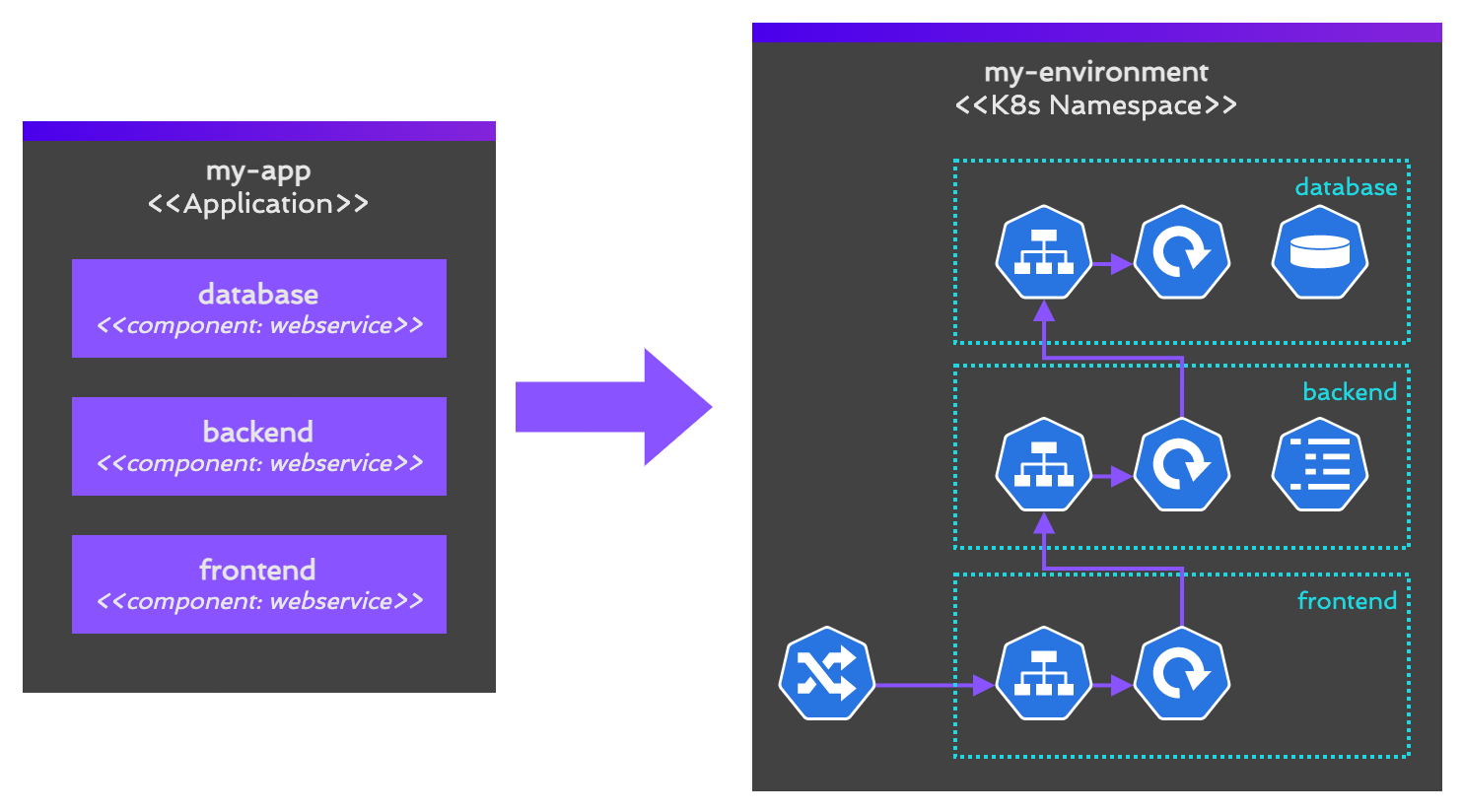Napptive Cloud-Native Platform
Napptive offers a managed cloud-native application platform centered on Kubernetes and OAM, empowering developers to create environments, deploy, and manage cloud-native apps at speed and scale. It offers a multi-tenant, secure SaaS platform that eases the adoption of cloud-native applications. Some of its features include advanced self-service, ready-to-deploy applications, and fully extensible tools and extensions. It also provides an advanced Kubernetes development platform that empowers developers to create namespaces on-demand, with enforcement of secure multi-tenancy, and instant visualization of your apps’ status.
Open Application Model (OAM) applications
The Open Application Model (OAM) is a relatively new open-source standard developed by Microsoft, Alibaba, and other partners. It is designed to simplify the deployment and management of cloud-native applications on Kubernetes.
The OAM standard defines a declarative way to describe an application's components, their dependencies, and their configuration requirements. It also provides a set of APIs for managing the lifecycle of an application, including deploying, scaling, updating, and monitoring.
One of the key benefits of the OAM standard is that it allows developers to focus on the application logic rather than the underlying infrastructure. By separating the application from the infrastructure, developers can make changes to the application without worrying about the impact on the underlying infrastructure.
Some of the capabilities of the OAM standard include:
Declarative application definition (i.e., the OAM YAML files): The OAM standard provides a declarative way to define the components, dependencies, and configuration of an application. This allows developers to describe their application in a concise and consistent manner.
Separation of concerns: The OAM standard separates the application from the infrastructure, which allows developers to focus on the application logic without worrying about the underlying infrastructure.
Portability: Applications that are built using the OAM standard can be easily deployed and managed across different Kubernetes environments, which improves portability and reduces vendor lock-in.
Flexibility: The OAM standard allows developers to define their own custom resources, which gives them the flexibility to build complex applications that meet their specific needs.
Lifecycle management: The OAM standard provides a set of APIs for managing the lifecycle of an application, including deploying, scaling, updating, and monitoring.
Overall, the OAM standard provides a powerful set of capabilities for deploying and managing cloud-native applications on Kubernetes. Its focus on declarative application definition, separation of concerns, and portability make it a promising standard for building modern, scalable applications.
Napptive GitHub Actions
Catalog
Playground CLI
Development workflow
➜ playground config add-installation hackathon hackathon.napptive.dev
➜ playground login # --headless or --pat
➜ playground get-kubeconfig # ~/.napptive/hackathon/napptive-kubeconfig
➜ playground catalog push usernamespace/application:v1.0.0 ./deployments/
Kubectl
➜ kubectl --kubeconfig ~/.napptive/hackathon/napptive-kubeconfig <CMD>

